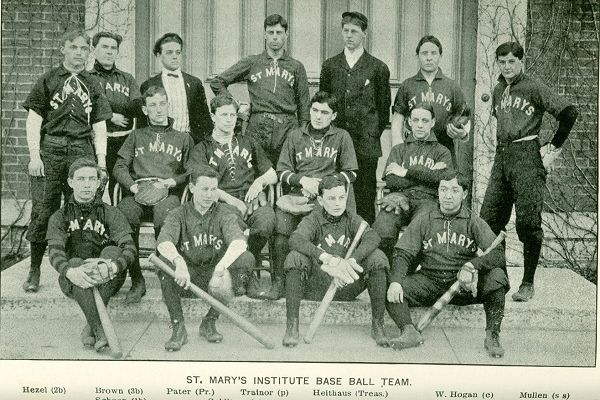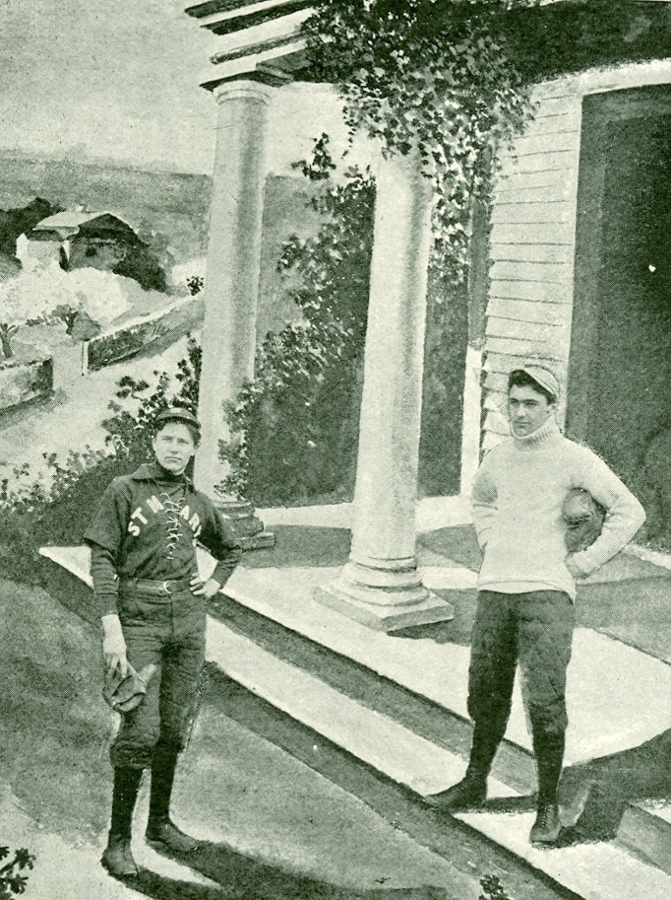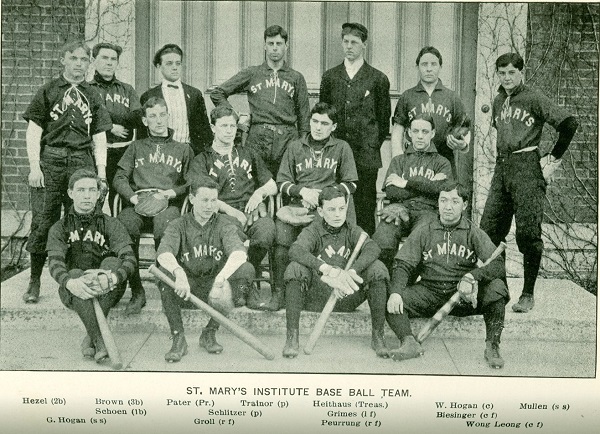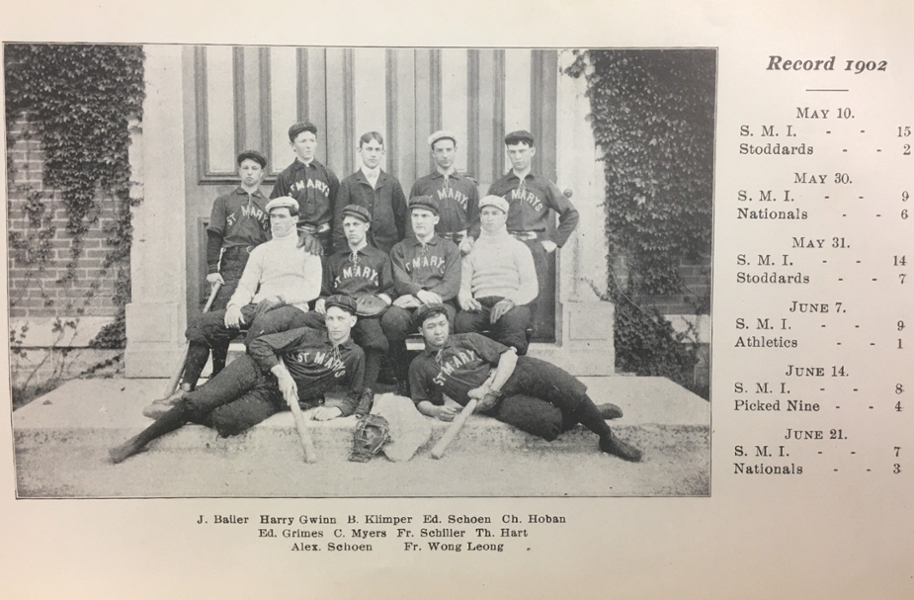University Libraries

Take Me Out to the Ballgame!
By Sarah Allison
St. Mary’s Institute, which later became UD, had one of Dayton’s earliest baseball teams, established in 1901, according to the St. Mary’s Institute Exponent. In 1902, the team roster of 13 men hailed from hometowns such as Covington, Kentucky; St. Louis, Missouri; Chicago, Illinois, and Honolulu, Hawaii.
In 1903-04, St. Mary’s played Wittenberg University, winning 10-2. The team also played local amateur teams and had practice games with teams in the Dayton Central League, an early minor league. Such teams as the Stoddards, the Nationals, and the Shamrocks can be found in the record. St. Mary’s also played local high schools such as Steele and Stivers. In its first three years, the team won every game. From 1901 to 1920, the St. Mary’s team had 97 wins, 26 losses, and one tie.
St. Mary’s first player to make it to the Major Leagues was Victor “Biff” Schlitzer, who was born in 1884 in Rochester, New York. He is listed in the 1903 roster and received a monogram — also known as a varsity letter. In an April 1903 article about a game, the Dayton Daily News described Schlitzer favorably: “Schlitzer did good work in the box, striking out six men. He was a little wild at certain moments, and made an inauspicious beginning.” The Exponent in 1903 highlighted his achievements on the field in every article written about the baseball team. This includes an article on a shutout against the Shamrocks:
The pitching of Schlitzer, the Institute twirler, was the feature of the game, as he allowed but three hits and struck out eight of the opposing batsmen without issuing a single pass. His effectiveness can best be judged from the fact that only 29 players faced him during the entire nine innings.
In 1904, Schlitzer is listed in the roster as the manager of the team. An article in the April 1904 Exponent states, “At a meeting of the student body Monday evening, February 22, 1904, Victor Schlitzer was elected as student manager. … Manager Schlitzer is already scouring for games and promises us one of the longest and hardest schedules we have ever had.”
In the same issue appears this account:
Victor Schlitzer, Rochester, New York, the star pitcher of the team, did the twirling for the junior team of 1902, and last year was, therefore, his first year on the Institute team. He proved, however, a most reliable slabsman. … He is a right hander, has good speed and curves and a change of pace that fools the best batsman; but the quality that most endears him to the Institute fans is his coolness under fire.
At 5’11” and 175 lbs, Schlitzer pitched in more than 49 American League games between 1908 and 1914. He made his major league debut on April 17, 1908, for the Philadelphia Athletics with an 8-2 win over the Highlanders in New York. In June 1909, he was traded to the Boston Red Sox, followed by moves in 1911 to Indianapolis and in 1912 to Kansas City. Two more trades to the minor leagues followed, and in 1914, he signed to play for the Buffalo Buffeds of the Federal League. He had played separately for the Cuban general league and pitched for Matanzas during the winter term of 1908 and 1909, but in 1909, he and another player quit because of the working conditions, and each settled for $10 and a first-class passage home to the United States. He also is on record pitching in the early Negro League in 1908. He married Ruby Guth of Utica, New York, in 1911; the family later settled in Richland, Indiana. Schlitzer became a bookkeeper for a glass manufacturer and a traveling salesman for his own glass company. He died of myocardial failure in 1948 and is buried in Utica, New York.
UD has had other players in the majors since 1908. Jerry Blevins, a Flyers baseball walk-on in 2002, plays for the New York Mets. Craig Stammen, who pitched for the Flyers until he was drafted by the Washington Nationals in 2005 after his junior year, played for the Nationals from 2005 to 2015. He signed with Cleveland in 2016 and is now with the San Diego Padres.
- Sarah Allison, Graduate Student, Wright State University, Public History Program/University of Dayton Archives intern



